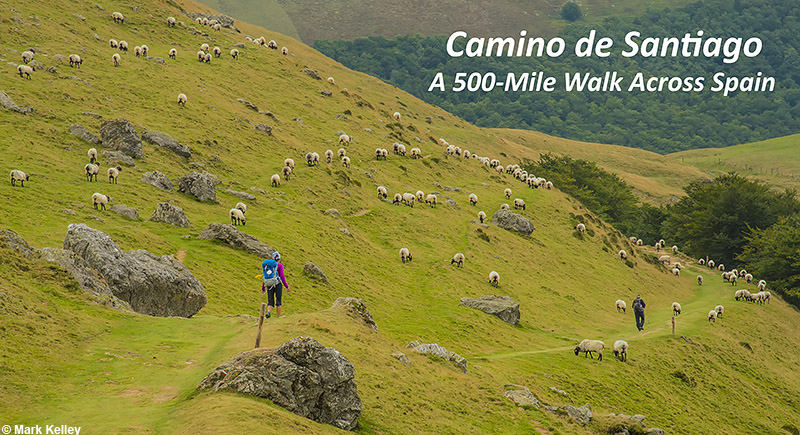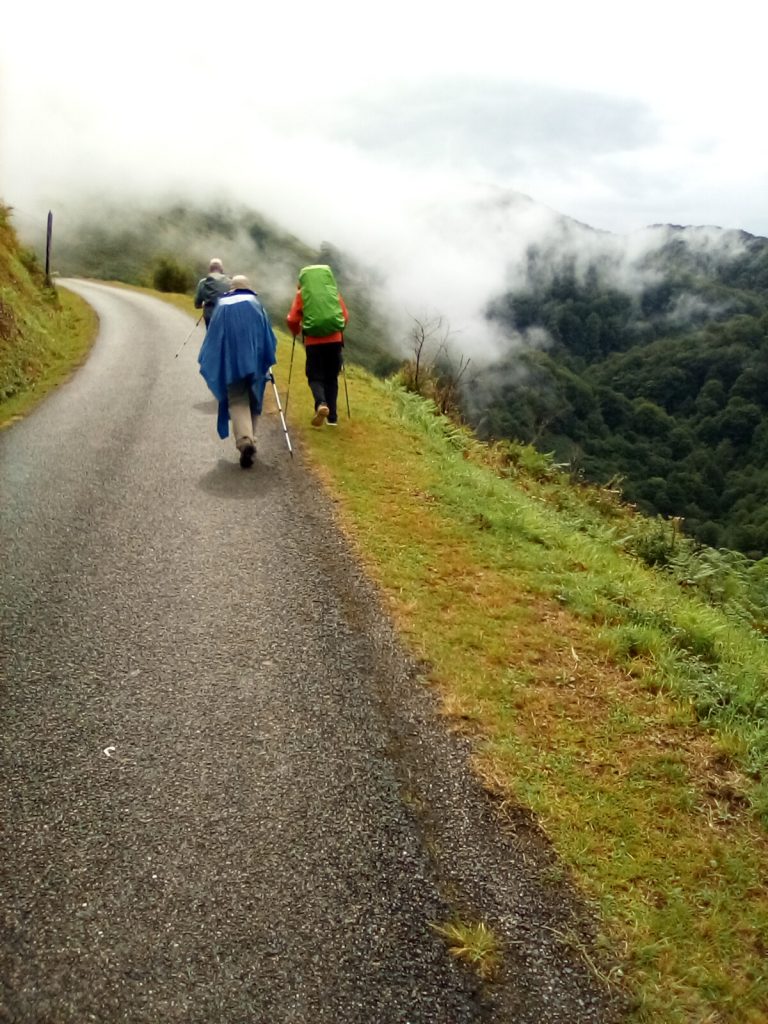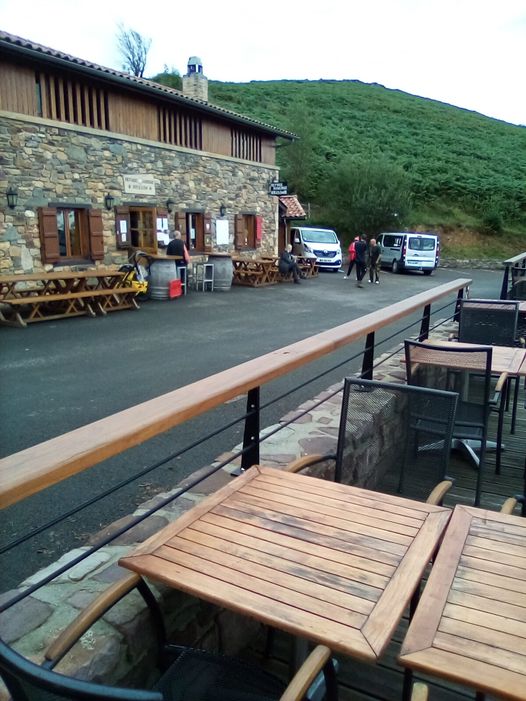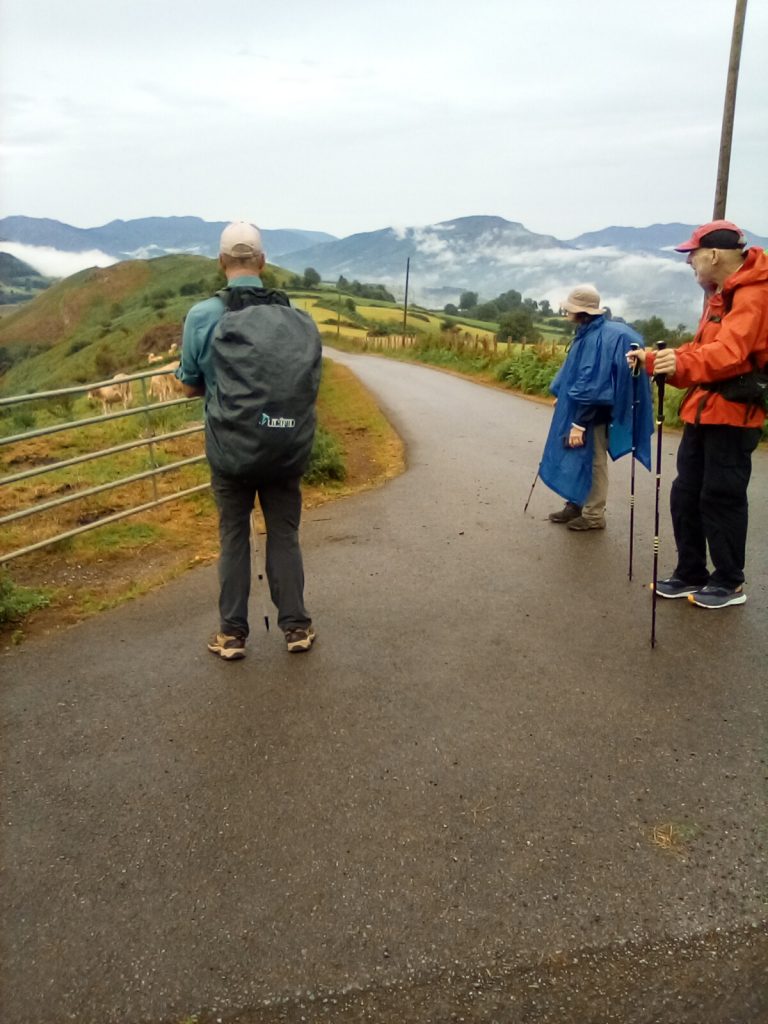
* * * *
I’ll be talking about re-reading Catcher in the Rye a couple paragraphs down. But first…
Back on September 25, 2021, I flew back from Madrid and a month in France and Spain. As told in Hiking over the Pyrenees, in 2021 – finally, the trip centered around a 17-day hike on the Camino de Santiago. It covered the section from Saint-Jean-Pied-de-Port and over the Pyrenees Mountains that I failed to do in 2017, when my brother Tom and I first hiked the Camino Frances. (He hiked over the Pyrenees but I met up with him in Pamplona. From there we hiked and biked the remaining 450 miles to Santiago de Compostela in northwestern Spain.)
I ended the “Pyrenees” post by promising more posts about the hiking adventure, but since then I’ve been working on another project. It’s an Ebook about turning 70 in 2021, and like I said in the book, I have to finish it soon. That’s because turning 70 is like losing your virginity: “You can only do it once!” Besides that I want to have the paperback version done in time for handing out as presents for each family member at our Christmas gathering.
One chapter compares how old people were seen 50 years ago, compared to how “we” see ourselves today. That chapter included how John Updike portrayed old people in his 1971 novel, Rabbit Redux, set in the summer of 1969.* But then I came across a paperback copy of Catcher in the Rye, by J. D. Salinger. I – like most adolescents my age – loved that book 40 or 50 years ago, but now that I’m up there in years I take issue with how he portrayed old people.
It’s been a while since I’ve read about Holden Caulfield’s adventures, but I got as far as the start of Chapter 2. That’s where Holden visits “old Mister Spencer,” his history teacher at Pencey Prep. (He’d just gotten kicked out of school and stopped to say goodbye.) Mrs. Spencer meets him at the door, and Holden has to repeat questions; “She was sort of deaf.” He said the couple got a bang out of things, “in a half-assed way,” then described a time he and some others visited the couple. Mr. Spencer brought out a Navajo blanket he’d bought years ago. “You take somebody old as hell, like old Spencer, and they can get a big bang out of buying a blanket.”
Holden said he wasn’t crazy about old people anyway, sitting around in “ratty old bathrobes… Their bumpy old chests are always showing. And their legs. Old guys’ legs, at beaches and places, always look so white and unhairy.” He added, “you wondered what the heck he was still living for. I mean, he was all stooped over, and he had very terrible posture.”
As when Mr. Spencer dropped some chalk in class, “some guy in the first row always had to get up and pick it up and hand it to him.” Then came the kicker: “They were both around seventy years old, or even more than that.” To which I said, “Excuse me? Old as hell at 70 years?”
Then added, “Hey Holden, yurass!” I had a feeling that old Mr. Spencer didn’t do stair-stepping, 30 minutes at a time, four days a week, with a 30-pound weight vest and ten pounds of ankle weights. (Like I do now.) Which led to the main point of the chapter: That “old people” in this day and age see themselves as way different, compared to 40 or 50 years ago. (Now that “we” are getting up there ourselves.) And indeed, some people my age – like many “old” high school classmates – still yearn for a return for those “good old days.” (Bumpy old chests, white, unhairy legs and all.) But not me. I’m enjoying the heck out of turning 70, and plan to live a lot longer. (Thanks to a healthy diet and lots of aerobics, including high-intensity stair-stepping.*)
But getting back to Holden Caulfield, and how he ended up leading me down a Rabbit Trail.
The term is generally seen as negative and non-productive, but to me those “Rabbit Trails” are the best and most-fun part of doing research for my writing. (Even though I usually have to shunt them off to the notes, either at the end of a blog post like this, or in an Ebook.) This one centered around my hearing that Salinger saw extensive combat in World War Two:
In the spring of 1942 … Salinger was drafted into the army, where he saw combat with the 12th Infantry Regiment, 4th Infantry Division. He was present at Utah Beach on D-Day, in the Battle of the Bulge, and the Battle of Hürtgen Forest.
And during the Normandy campaign Salinger met Ernest Hemingway. He was “impressed with Hemingway’s friendliness and modesty, finding him more ‘soft’” than his gruff public persona. Hemingway in turn said of Salinger’s writing, “Jesus, he has a helluva talent.” Later in the war Salinger was assigned to a counter-intelligence unit, using his knowledge of French and German to interrogate prisoners of war. In April 1945 he entered a concentration “subcamp” of Dachau. He’d risen to the rank of Staff Sergeant and served in five campaigns. His war experiences affected him deeply, and he later told his daughter: “You never really get the smell of burning flesh out of your nose entirely, no matter how long you live.”
More to the point, just before the war Salinger submitted several short stories to “The New Yorker,” but most got rejected. Then in December 1941, the magazine accepted Slight Rebellion off Madison, a “Manhattan-set story about a disaffected teenager named Holden Caulfield with ‘pre-war jitters.’” So “old Holden” goes back as far as 1941, pre-World War Two…
And that’s what I love about my research, for writing blog-posts and Ebooks; going down those “rabbit trails.” The joy of discovery, the joy of learning something new. (Even if I do have to end up putting most interesting stuff in Ebook notes, so as note to interrupt the flow of the main narrative.) But in the end, going down those rabbit trails can – along with vigorous exercise and a healthy diet* – keep you young, alive and kicking for a long, long time.
* * * *
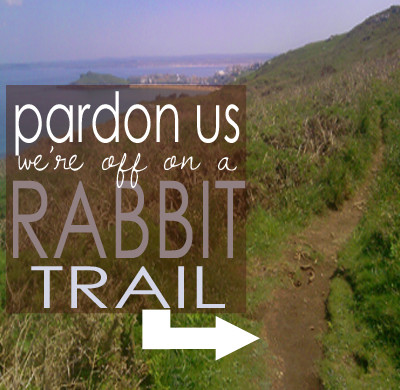
* * * *
The upper image is courtesy of The Catcher in the Rye – Wikipedia.
Re: How I ended up with a copy of “Catcher,” just as I’m working to finish the Turning 70 book:
And as if John Updike’s picture of old people wasn’t bad enough, in the process of trying to finish up this book, I got hold of a copy of “Catcher in the Rye,” by J.D. Salinger. And that all started when I picked up a second-hand paperback copy at the local “Yuppie Goodwill,” in early October 2021. (Can you say, “sign from God?”)
Also Re: “Catcher in the Rye.” I bought the paperback edition by Little, Brown and Company, 1951. (In October 2021, while working to wrap up the book for use at the family Christmas.) Salinger copyrighted the work in 1945, 1946, and 1951, and renewed the copyright in 1979. The quotes about the “old” Spencer couple are at pages 8 and 9, the end of Chapter 1 and the beginning of Chapter Two. Another note: I learned in “Crash Course American Literature” – the one I talk about in the chapter on “Great Lectures” [in the Ebook] – that Salinger saw extensive combat in World War Two.
The information about Holden and Salinger came from Wikipedia and links therein. I read them, but found discrepancies. For example, the article on Holden himself said that Salinger first used the name Holden Caulfield in an “unpublished short story written in 1941,” but that it first appeared in print in 1945. The article on Salinger indicated that the “New Yorker” published the article with Holden in it in December 1941. (But putting that in the main text would “interrupt the flow.”)
Re: Aerobics, high-intensity stair-stepping, and healthy diet. I currently do two hours of stair-stepping, 30 minutes at a time, with a 30-pound weight vest and ten pounds of ankle weights. I also do five hours of medium aerobics a week, kayaking, jog-walking or calisthenics ten minutes at a time. As for diet and supplements, see An Updated ‘Geezer Guide to Supplements,’ with links to A Geezer’s guide to supplements, and A Geezer’s guide to supplements – Part II.
The lower image is courtesy of Rabbit Trail Images – Image Results. It’s accompanied by an article, “Rabbit Trails are Good!” A blog about the joys and benefits of home-schooling, it includes these thoughts: “A quality education is not about sticking to the book. It is about expanding beyond it’s margins, exploring, discovering and teaching to the spark:”
“Getting sidetracked” will not only help you teach to your children’s interests and improve the quality of their education, but it will also help you to ignite a lifelong love of learning. In the process, you will have also taught them that they can learn anything! All they need do is go off on a rabbit trail!
* * * *
